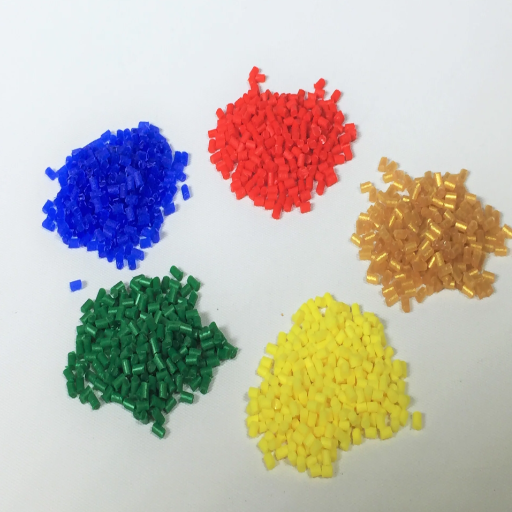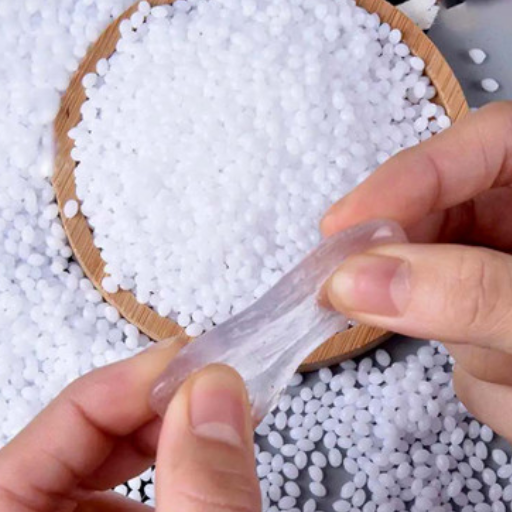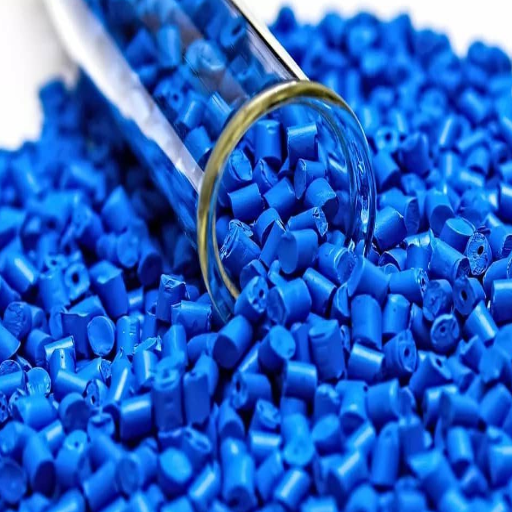The tiny beads of polyethylene pellets have emerged as a critical innovation aimed at increasing the efficiency and sustainability of plastic manufacturing. Polyethylene pellets pose a solution from which countless plastic products can be manufactured without compromising pending environmental issues. In this blog post, I delve into the myriad ways polyethylene pellets help shift production practices towards environmentally friendly ones and reduce ecological footprint. This explains why polyethylene pellets mark innovative solve plastic consumables industrial difficulties. Readers will uncover their container properties alongside, the manufacturing methods, and the associated sustainability benefits, drawing their conclusions as to why the polyethylene pellets innovation was presented within the plastic industry.
What are Polyethylene Plastic Pellets?
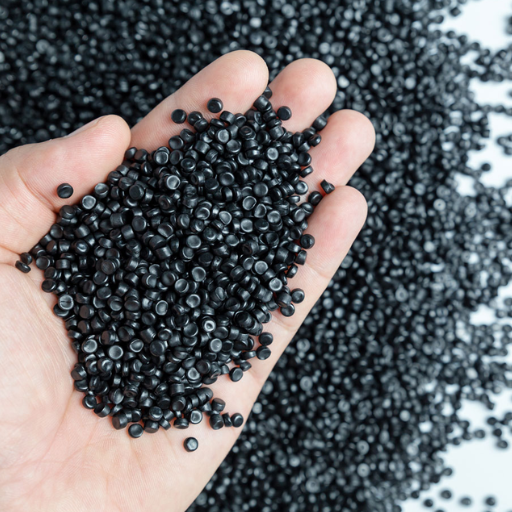
Like other kinds of plastic, polyethylene can be processed and produced into small, bead-like containers referred to as resin pellets. Polyethylene, a thermoplastic polymer, serves as the parent mold for these resin pellets. The covering examples of rods like irons and saplings such as construction containers prove the versatility of polyethylene pellets. They are strong, lightweight and flexible. The uniformity in size and shape among the pellets enables ease in processing as well as transportation, aiding large-scale operations without undermining productivity.
Understanding the Basics of Polyethylene Pellet Composition
The long ethylene molecules (C2H4) that comprise polyethylene pellets are capable of being configured into different versatile polymers. The properties of a given polymer depend on the type of polyethylene utilized: Low-Density Polyethylene (LDPE), High-Density Polyethylene (HDPE), or Linear Low-Density Polyethylene (LLDPE). Added below are some of the technical parameters that aid in understanding the composition of Polythene:
- Density: For LDPE, it is 0.910 g/cm³, whereas for HDPE, 0.970 g/cm³ as well as LLDPE lying in between these values.
- Melt Flow Index (MFI): Ranges from 0.1-25 g/10 minutes, quantifying their processability in subsequent stages of production.
- Melting Point: Approx. 105–135°C, with higher melting points seen in HDPE.
- Tensile Strength: From the range of 10-40 MPa, with the addition of flexibility offered by LDPE and rigidity by HDPE.
- Crystallinity: LDPE has a lower crystallinity of around 50% and HDPE with an approximation of 80-90% higher value.
The above parameters can impact the industrial utility of polyethylene pellets making it application-specific.
How are Plastic Pellets Manufactured?
Resin pellets, more commonly known as plastic pellets, are produced using a sophisticated procedure that starts with the polymerization or polycondensation of either crude oil or natural gas to yield polymers. These polymers are then mixed with various additives like colorants, stabilizers, or fillers before being melted to modify their properties. The molten plastics are extruded through a die to form long strands, which are subsequently cooled and solidified before being chopped into pelletized granules. These granular plastics serve as feedstock in numerous applications such as injection molding, extrusion, and 3D printing serve as examples and are ready for transportation after pelletizing, stabilizer supply, and colorant supply.
Applications of High-Density Polyethylene in Various Industries
High-density polyethylene (HDPE) is a multifaceted material known for its strength and resistance to mechanical damage and chemicals. Its uses range throughout different industries providing practical solutions for various issues.
- Packaging Industry
HDPE’s strength enables it to be used in the making of bottles, containers, and plastic bags. Detergent bottles and milk jugs are made from HDPE because these products need to be protected from light and moisture. In addition to HDPE being lightweight, non-toxic, and food-safe, its density rated between 0.941–0.965 g/cm³ also burst grade tensile strength while remaining cost-efficient.
- Construction Sector
Due to its flexibility and ability to withstand an impact, HDPE is used for plastic lumber, geomembranes, and pipe manufacturing. HDPE pipes specifically are used in the transportation of water, gas, and sewage because of their resistance to corrosion and durability against harsh environments. HDPE pipes are capable of withstanding an operating pressure of 10–25 bar while maintaining a temperature of -40°C to 60°C.
- Automotive Industry
HDPE is commonly used in the automotive industry for fuel tanks, seat backs, and interior parts. It is lightweight which helps improve fuel economy, while its strength improves safety and design scope. It is also very resistant to chemicals which is important for oil or fuel applications.
- Agriculture
In modern agriculture, HDPE is important as it is used to manufacture irrigation pipes, nets, and silage covers. It is durable due to UV stabilizers, increasing the lifespan of products in extreme environments.
- 3D Printing and Additive Manufacturing
Strength and recyclability are two of the standout features that HDPE offers, marking its entry into the world of 3D printing. Along with the relatively high melting point of ~130°C, it has a low rate of shrinkage which makes it ideal for durable prototypes and functional parts.
All these bring forth the fact that its adaptability along with precision performance characteristics makes it a primary material across these industries and more, proving its importance in modern-day construction and infrastructure.
Why Choose High-Density Polyethylene for Your Needs?
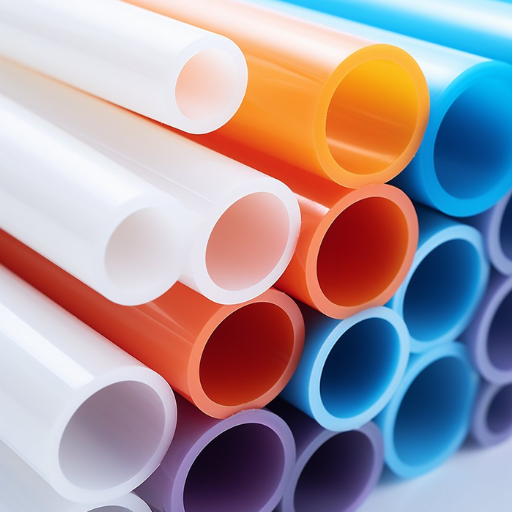
High-density polyethylene (HDPE) has multiple benefits that make it a preferred material for many uses. It offers a remarkable strength-to-density ratio, guaranteeing reliability and durability even under extreme conditions. Moreover, HDPE is chemical, UV, and moisture resistant, allowing for outdoor and industrial use. Also, its lightweight mechanical properties lower transportation costs and increase cost-effectiveness without compromising strength. As a recyclable material, HDPE is eco-friendly, and long-lasting, reducing waste and minimizing the impact on the environment. Collectively these industrial traits make it easy to use and tailor economically.
Benefits of Using HDPE Over Other Plastic Types
- Durability and Longevity
The plastic with the greatest tensile strength is HDPE. Its high tensile strength allows it to withstand significant impacts and stress without scratching, cracking, or breaking even in extreme temperatures.
- Chemical and Environmental Resistance
Compared to other varieties of HDPE plastics, it is more resistant to chemicals, UV rays, and moisture. Withstands extreme weather conditions which is why it is used in plumbing systems as well as industrial and outdoor applications.
- Lightweight and Cost-Effective
When compared to other types of plastics, HDPE is both lightweight and strong. This reduces transportation costs while maintaining structural integrity. The combination of these factors enhances performance while decreasing operational costs.
- Recyclability and Sustainability
HDPE’s durability makes it a more sustainable choice compared to other less durable plastics. Low HDPE plastic number enhances the environment by recycling easily, while its long lifespan decreases waste.
- Versatility Across Applications
HDPE is used in pipes, industrial packaging, and pipes, making its versatility unmatched. The many uses stem from its combination of high strength, resistance to chemicals, and adaptability, which outperforms many other types of standard plastics.
Exploring the Durability and Resilience of High-Density Polyethylene Pellets
The commendable toughness and elasticity of HDPE (High-Density Polyethylene) pellets are unmatched. This makes HDPE pellets a popular commodity across the industries. The impact, cracking, and external pressure resistance of these pellets are attributed to their high molecular density, Accordingly, HDPE pellets endure mechanical and environmental stress.
Chemical resilience is another major attribute of HDPE pellets. It does not alter its form due to exposure to a range of solvents, acids, and corrosive materials which marks its usability in rigorous applications. Moreover, its low moisture absorption rate reduces degeneration even in high humidity which guarantees integrity.
The eco-friendly nature of these pellets attributed to HDPE’s enduring characteristic is defined by its enhanced recyclability. The ability to be reprocessed multiple times without significant loss of material properties classifies it as a green solution. Its durability lowers the maintenance required for replacements and reduces waste in the long term, ultimately minimizing the cost incurred.
Environmental Impact: Is HDPE Eco-Friendly?
As far as economics goes, HDPE (high-density polyethylene), is one of the more basic, easy-to-use polymers. It is more environmentally friendly in comparison to other plastics as it can be recycled. Perhaps one of the most unique characteristics of HDPE is that it can be recycled multiple times without significantly losing its value, especially in terms of durability. This is why recycled plastics tend to be used in piping, detergent containers, and even plastic lumber. Doing so increases the availability of resources that need to be mined.
Its non-leaching and moisture-resistant nature enables the prevention of any chemical contamination when food or drink is placed in an HDPE vessel. Coupled with the fact that it is a light polymer, it can be transported easily. This results in reduced emissions which subsequently diminishes the carbon footprint of a process.
Like all other materials, HDPE has its share of issues. The manufacturing process of HDPE is extremely intensive as it requires a high amount of energy; additionally, it exclusively uses non-renewable fossil fuels. To make the process more eco-friendly, its producers are trying to harness more renewable sources of energy during production while also using postconsumer recycled (PCR) grades of HDPE to increase the lifecycle of the material.
How to Use High-Density Polyethylene Pellets in Injection Molding?
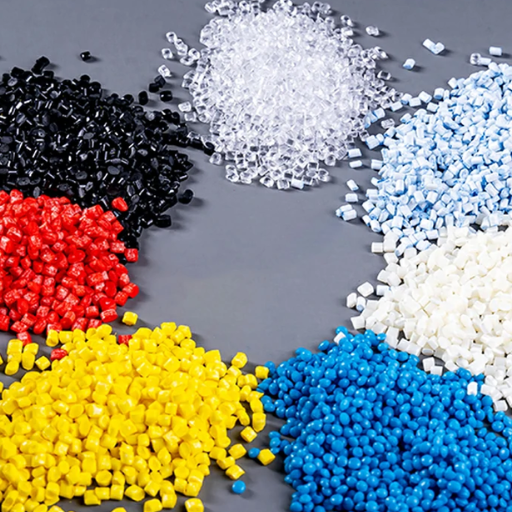
Shredded high-density polyethylene (HDPE) pellets with a diameter of approximately 4 mm can be employed for injection molding after undergoing thorough drying to get rid of moisture which could result in defects incorporated into the product. After setting the temperature between 180°C to 230°C which is optimal for unleashing the melting range of HDPE, the rod is injected into a mold under adequate pressure so that it can achieve the desired shape. Once the part has sufficiently cooled, it is ejected from the mold and can be reapplied for further shredding and pulverization. The ease of flow and thermal stability make the production of lightweight and versatile products efficient.
Step-by-Step Guide to Injection Molding with Polyethylene Particles
- Preparation of the Material
First, acquire high-quality polyethylene particles like HDPE or LDPE based on the required attributes of the end product. These materials, in particular, need to be dry as moisture will result in defects in the final product. Preheat the injection molding machine and set the temperatures to range from 180°C to 230°C for HDPE, and 160°C to 200°C for LDPE, depending on the specific grade and manufacturer recommendations.
- Loading the Material
Load the polyethylene particles in the hopper of the injection molding machine. Make sure the feed rate of the machine is controlled to maintain a steady flow of the material to the injection screw and no clogging occurs.
- Melting and Plasticizing
The material is added to a barrel that is heated and the rotating screw melts and plasticizes. The screw rotation generates heat and pressure to the polyethylene particles so that they are turned into a uniform mass that is in a fully molten state and ready to be injected.
- Injection into the Mold
The next step involves the injection of molten polyethylene into a pre-designed mold cavity at a very high pressure (usually 10,000 to 35,000 psi). The mold needs to be maintained at a temperature ranging from 40°C, up to 80°C for HDPE, to allow for proper shaping and surface finish.
- Cooling and Solidification
Let the polyethylene cool in the mold for the specified time. Cooling is important since it freezes the material into a specified shape. The range usually depends on the thickness and size of the product and typically varies from 10 to 60 seconds.
- Ejection of the Product
After cooling, the part is removed from the mold with care so as not to damage the part, employing the use of ejector pins. Check the part for any defects like warpage, incomplete filling, or any quality issues.
- Post-Processing and Reuse
Remove any additional materials or flash, and if necessary, perform any other finishing procedures. In the spirit of conserving materials, further scraps, as well as rejected parts, should be reground for use in future production.
This overview of the process illustrates the effectiveness, precision, and cost efficiency of injection molding in manufacturing polyethylene products. As is the case with many other processes, proper setups, control of temperatures, and design of molds have to be undertaken to achieve the desired results.
Common Challenges in Injection and How to Overcome Them
Although very effective, injection molding has its share of difficulties. Some of the most notable problems include:
- Warpage and Deformation
Warping is a form of distortion associated with the differential cooling of parts. You can avoid this by controlling the cooling rate with uniform temperature molds and symmetric patterns. In addition to those, choosing a material with appropriate minimal change in volume during cooling also helps with warpage.
- Short Shots
Short shots or incomplete parts due to the failure of the molten material to fill the mold cavity a typical problems during the injection molding procedure. Increasing the injection pressure, ensuring adequate material flow, and checking for adequate air exit channels to eliminate locked-in air would solve this problem.
- Flash Formation
Skillfully cutting shallow details on a piece makes it more appealing. However, the escape of excess material from the mold cavity is bound to happen. This can be taken care of by examining and keeping the molds in shape so that there is no undue wearing, optimizing the hammer grip so that the clamping force is neither too great nor too little, or correct mounting of the mold parts.
Manufacturers can realize high-quality molded products through appropriate maintenance of equipment, process refinement, and material choice with the foresight to potential struggles like those mentioned.
Tips for Achieving Good Quality and High-Tensile Strength
The first step I take in achieving good quality and high tensile strength in injection molding is to determine the right raw materials. Incorporating high-grade resins along with suitable additives boosts the mechanical properties along with the durability of the end product. Then, I adjust the working parameters to precision: optimal temperature, pressure, and cooling time for the most defect-free and strongest results. Regular upkeep of molds is very important because the proper care of the mold increases uniformity, enhances part quality, and ensures that all components are properly filled. Testing and thorough inspections verify the durability, tensile strength, calibrated dimensional accuracy, and overall performance of the parts, ensuring all requirements are satisfactory.
What to Consider When Purchasing Polyethylene Plastic Pellets?
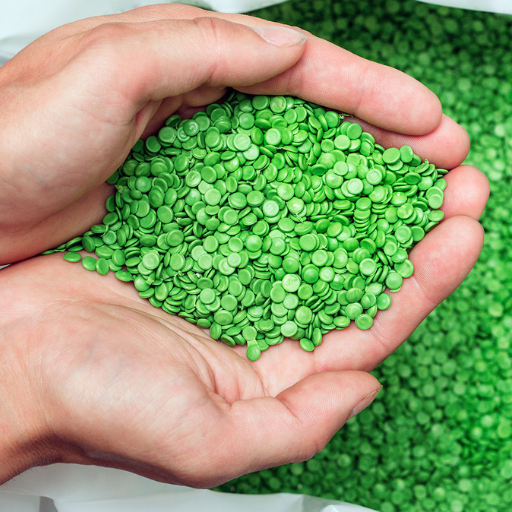
When evaluating the polyethylene plastic pellets for purchase, it is necessary to analyze the grade of the material HDPE, LDPE, and LLDPE in regard to the application requirements. Take into consideration the melt flow index (MFI) since it affects material processing ease, and thus needs must suit your manufacturing system. The product’s impact resistance, tensile strength, and stability must comply with the desired thermal properties. If the material is destined for food or medical usage, industry certification compliance, like FDA and ISO, must be checked. Supplier’s reputation is also of utmost importance which assures uniformity of pellet grade and his competitive pricing aids in proper evaluation.
Understanding the Different Grades of Plastic Resin
Based on a resin’s properties and what it will be used for, it can be slipped into one of the many categories or grades. These include but are certainly not limited to, commodity resins, engineering-grade resins, and high-performance resins. As a way example, polyethylene (PE) and polypropylene (PP) are classified as commodity resins. They are very affordable, making them quite common with everyday products like packing. In comparison, engineering-grade resins like Polycarbonate (PC) or Acrylonitrile Butadiene Styrene (ABS) are considered superior. They have better strength, heat resistance, and overall durability. Because of this, they can be utilized in industrial components, automotive, and electronic devices. PEEK (Polyetheretherketone) or PTFE (Polytetrafluoroethylene) on the other hand, are considered high-performance resins as they are used in specialized applications like medical and aerospace implants due to their exceptional thermal and mechanical properties.
Every grade is unique and has its very own purpose. Take, for example, the temperature compliance or safety certifications such as FDA and ISO, markings that need to be cleared to consider the equipment for public use or service. Knowing the differences helps ensure that a selection is still within budget but resonates with operational demands alongside performance needs on cost efficiency.
How to Assess Product Quality and Value for Money?
- Material Specifications
Check whether the product has the required certifications, such as FDA, ISO, or ASTM, relevant to the industry of application first. For example, in thermoplastic resins, critical parameters that must be assessed are tensile strength, thermal resistance, and chemical resistance. Some grades have proprietary benchmarks like thermal tensile strength above 50 MPa being ≥50 MPa and continuous use temperature of 150-300°C.
- Manufacturing Quality
Evaluate the manufactured item for flaws, cracks, unfinished surfaces, and warping. Effective high-quality manufacturing processes result in reduced tolerance variations, ensuring the defined design constraints are met. For more demanding engineering applications, often ±0.01 mm is the standard for dimensional tolerance.
- Performance Testing
Check if the product achieves the desired results under expected simulated conditions. High-value impact resistance (measured in kJ/m²), UV resistance (critical for outdoor usage), and mechanical fatigue testing are invaluable in establishing reliability.
- Cost Comparison
Evaluate pricing for various alternatives while weighing features offered. Maintain a lookout for inadvertently stated maintenance, installation, or accessory costs that influence overall value. Often analysis of value versus cost reveals the most advantageous selection.
- Customer Reviews and Manufacturer Reputation
Gather information from reputable sources and previous users. Reviews that praise performance and durability certainly indicate quality. The warranty and customer assistance per the manufacturer’s policies also serve to indicate the reliability of the product.
Where to Buy the Right Product and What Customers Appreciate
Walmart, Best Buy, and Amazon are online retailers of choice because of their inventory breadth and value for money. Extensive customer reviews, fast shipping options, and discounts on various products attract shoppers to Amazon. Best Buy is known for Electronics, and they offer in-store pickup, which is convenient for customers. Walmart sells a wide range of goods at reasonable prices, fostering easy access through numerous locations. Customers are appreciative of the expedited delivery, transparent return policies, and quality assurance that these platforms provide, facilitating an effortless shopping experience.
How to Reuse and Recycle Polyethylene Pellets?
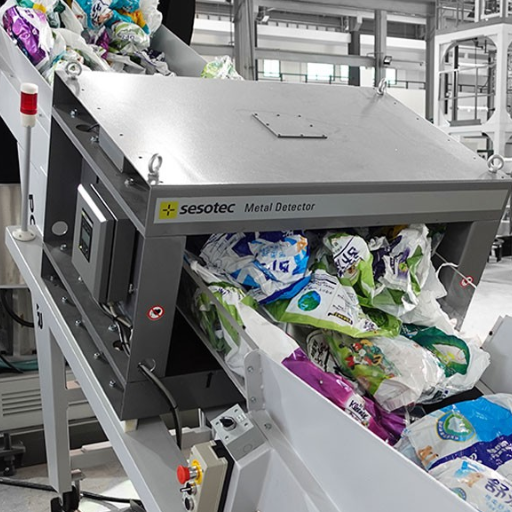
Clean, uncontaminated wash and reuse polyethylene pellets face minimal cleaning, sorting, and processing requirements. Initially, pure and contaminated pellets should be separated from each other. Clean the reusable pellets thoroughly to remove dirt or residues, ensuring they meet the required standards for reprocessing. For recycling purposes, check that the melting and re-extruding to create new pellets are monitored to maintain consistent quality. Firms seeking to recycle materials on a larger scale should collaborate with certified recycling facilities, ensuring adherence to eco-friendly practices. Adopting these approaches helps not only in waste reduction but also in minimizing the costs of raw materials, aiding in the sustainable manufacturing process.
Best Practices for Recycling Polyethylene Products
In my experience, the effective recycling of polyethylene starts with the sorting. I make it a point to separate clean plastics from mixed or contaminated materials. Removing all traces of debris or residue by washing the items is critical because it increases the quality of the recycled product. Relating to the recasting processes that I perform, I make sure that the heat and pressure applied during melting is uniform to enable reuse without damaging the material. My partnerships with certified recycling programs have been extremely beneficial for tackling more advanced recycling problems. This approach not only minimizes waste but also fosters a more environmentally friendly and economical production methodology.
Innovative Ways to Reuse Plastic Pellets at Home or in Business
Recycling plastic pellets effectively aids in tackling environmental issues on a personal and professional level. Some of these practices incorporate new ways to recycle, as seen below:
- Home Crafting Projects
Plastic pellets are perfect materials for do-it-yourself (DIY) crafting designs. Individually, they can be sculpted or as a group flow to the creation of jewelry, coasters, and mini sculptures. Each polyethylene or polypropylene plastic pellet can be worked with, as long as the melting temperature is kept between 121 – 149 degrees Celsius (250 to 300 degrees Fahrenheit). Safety equipment such as masks, goggles, and proper ventilation is needed to promote air safety at all costs.
- Prototyping and 3D Printing
Hobbies and small companies can make use of plastic pellets to manufacture feedstock for 3D printers. This enables prototyping or production on a small budget. For best results, use consistently sized pellets containing less than .02 moisture content. Detachable prints are best strung of the pellets and are dried in a labeled oven between 160 and 200 degrees Fahrenheit for optimal printing conditions.
- Eco-friendly Manufacturing
Recycling of plastic pellets is common among companies that utilize them in the manufacture of secondary products like pocked furniture, and even construction materials. Quality and material strength in the new materials are gained while remolding the pieces by providing added heat (grain) within the range of 350 to 450 degrees Fahrenheit). For this aim, formation is improvided by working with local recycling factories which aid in attaining pre-sorted, high-quality pellets.
- Garden and Landscaping Applications
In residential settings, plastic pellets can be converted into fillers for raised garden beds. Pellets may also be used as lightweight aggregates in the concrete of garden structures. It is critical for the health of the plants and soil that the pellets are non-toxic and clean.
- Indoor and Outdoor Furniture
Stools, tables, and even storage bins can be made from plastic pellets by melting them into the intended shape. This conservation approach minimizes the use of virgin materials and helps satisfy the specific design requirements of particular clients.
These approaches not only create new uses for plastic pellets but also promote sustainable practices by decreasing the need for plastic production. As with all materials, the appropriate safety measures should be maintained when working with plastics, and their processing parameters checked for the best outcomes.
The Role of Polyethylene in Creating Eco-Friendly Solutions
Because polyethylene is so versatile and recyclable, it makes a significant impact toward advancing eco-friendly solutions. It is one of the most utilized forms of plastic – from being used in packaging to construction materials. Its lightweight nature minimizes emissions during transportation, while its durability lengthens product lifecycles which in turn reduces waste. Polystyrene’s environmental impact can be reduced through recycling, whether it is transformed into new products or alternative fuels. Its sustainability is improved through developments such as biodegradable polystyrene and chemical recycling, as both help tackle plastic pollution and plastic waste supporting the circular economy.
References
Frequently Asked Questions (FAQ)
Q: What are polyethylene pellets and how are they used?
A: Polyethylene pellets are a type of plastic raw material used in various applications such as packaging, food containers, and extrusion. They are known for their versatility, being used in both high density polyethylene plastic and low density polyethylene forms.
Q: How do polyethylene pellets compare to polypropylene in terms of usage?
A: Polyethylene pellets and pp polypropylene both serve as essential plastic raw materials. Polyethylene is often chosen for applications requiring flexibility and durability, while polypropylene is favored for its ability to withstand higher temperatures and chemical resistance.
Q: What are the benefits of using low density polyethylene pellets?
A: Low density polyethylene pellets offer benefits such as flexibility, impact resistance, and clarity. They are commonly used in applications like packaging and plastic films due to their lightweight nature and ability to create a quality product.
Q: Why is high density polyethylene plastic popular for piping applications?
A: High density polyethylene plastic is favored for piping due to its high strength, durability, and resistance to chemicals and environmental stress. HDPE pipes are lightweight yet strong, making them ideal for various infrastructural projects.
Q: What is the significance of virgin HDPE and HDPE granules in manufacturing?
A: Virgin HDPE and HDPE granules are crucial in manufacturing as they ensure superior quality and consistency in products. They are used in applications requiring high strength and durability, such as sporting goods and sensory items.
Q: How does the quality of polyethylene pellets affect customer satisfaction?
A: Customers find the product satisfactory when the polyethylene pellets offer superior quality, consistent performance, and reasonable price. High-quality pellets contribute to the production of reliable and durable goods, leading to positive customer reviews.
Q: What role does density polyethylene resin play in the production of plastic materials?
A: Density polyethylene resin is essential in determining the characteristics of plastic materials, such as flexibility, strength, and clarity. It is used in producing various forms of polyethylene, including low density and high density, each with its specific applications.
Q: Can polyethylene pellets be used in environmentally friendly products?
A: Yes, polyethylene pellets can be used in eco-friendly products, especially when derived from recycled materials or designed for recyclability. They offer an eco-friendly plastic solution by reducing waste and promoting sustainability in manufacturing.
Q: What are the typical applications of LDPE and HDPE in everyday products?
A: LDPE is commonly used in applications such as plastic bags, packaging films, and containers due to its flexibility and clarity. HDPE is used in products requiring high strength and durability, such as piping, food containers, and heavy-duty sacks.

